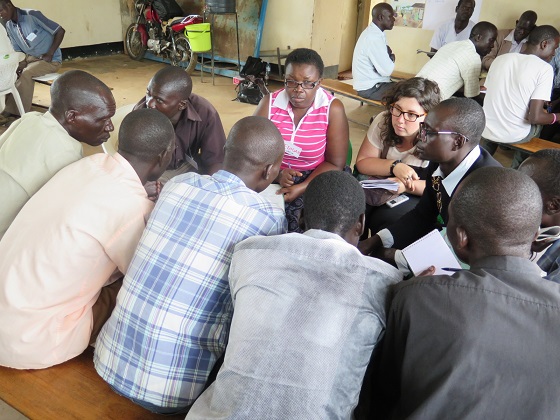GCARD3: where youth will not be left behind
I remember how my heart skipped a beat when I listened to Salina Abraham speak out on behalf of the youth last December in the closing keynotes of the Global Landscape Forum in Paris. She fervently defended the right of youth to be heard, to be inherently included in any agricultural and landscape research and, in short, to be part and parcel of any meaningful sustainable development planning. Her energy, which was representing the energy and passion of 50 youth innovators attending the event, moved me. I secretly wish there were more Salinas out there. I also secretly wish there were more institutions that provide youth with the opportunity to give closing keynotes in conferences. I will tell you: there are not many.
Fortunately, things seem to be gradually changing. More and more opportunities are given to youth to participate in high-level discussions and to take an active role in them. The Global Forum for Agricultural Research (GFAR) and the CGIAR consortium constitute good examples of this. Not only for increasingly investing in the much-needed research on youth and agriculture but also for making youth actively contribute to high-level policy discussions. The upcoming GCARD3 global event “No One Left Behind: Agri-food Innovation and Research for a Sustainable World” will put youth at the center with unique opportunities such as the “Youth Agripreneurs Project – YAP” and social media trainings. The event, which has a clear inclusivity focus “No One Left Behind” will, indeed, not leave youth behind.
The GCARD3 global event will cover five key themes, including “keeping science relevant and future-focused”, which for young researchers like myself is of unique interest. I hope that during the event many discussions will arise and be directed towards the need for more research on youth and their engagement with agriculture. I think for example of Uganda, where over 70% of the population is under 30 years old. This means that roughly twenty-seven million youth, with an immense variety of needs, rights, interests and challenges. We tend to speak of youth as one group, but the diversity that “youth” represents is vast. We need to understand this diversity better. We need to study youth as intertwined with other social divides such as ethnicity, gender or race, and the implications that this has for their engagement in agriculture. We need to understand better what are the main determinants that make some youth successful in agriculture and others leave the sector. While a body of research is already looking at some of these issues, there are still many knowledge gaps that need to be closed in this field.
I truly look forward to following the outcomes of the GCARD3, and seeing how youth have been fully brought on board, both physically in the event and as a key priority issue for future research in agriculture.
This blog post is part of the GCARD3 Youth blogpost applications. The content, structure and grammar is at the discretion of the author only.
Photo Credit: Julius Odeke (IITA)
Related Posts
Comments
By accepting you will be accessing a service provided by a third-party external to https://archive.ypard.net/


